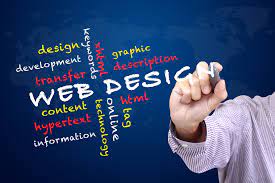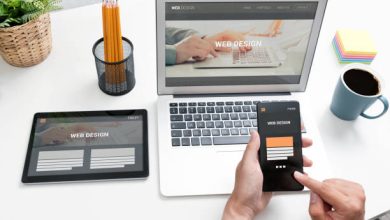What methodologies and tools can be used to become a master web designer?

Introduction
Are you a freelance web designer in New York looking to elevate your skills and become a master in your field? In this article, we will explore the methodologies and tools that can help you achieve your goal. Building a successful career in web design requires a combination of technical expertise, creativity, and an understanding of industry best practices. By implementing the right methodologies and utilizing effective tools, you can enhance your design process, create stunning websites, and establish yourself as a sought-after web designer. So, let’s dive in and explore the key methodologies and tools that can take your web design skills to the next level.
Understanding the Fundamentals
Before we delve into the methodologies and tools, it’s crucial to have a solid understanding of the fundamental principles of web design. These principles serve as the building blocks for creating visually appealing and user-friendly websites. Familiarize yourself with concepts such as layout, color theory, typography, and user experience design. Once you have a strong grasp of these basics, you’ll be better equipped to apply advanced methodologies and tools effectively.
Methodologies for Mastering Web Design
1. User-Centered Design Approach
Putting the user at the center of your design process is crucial for creating engaging websites. Adopting a user-centered design approach involves understanding your target audience, conducting user research, and incorporating their needs and preferences into your design decisions. By empathizing with your users and designing with their perspectives in mind, you can create intuitive and user-friendly interfaces.
2. Responsive Design
With the increasing use of mobile devices, responsive design has become a necessity in web design. Responsive design ensures that websites adapt and display properly across various screen sizes and devices. To master this methodology, familiarize yourself with responsive design frameworks and tools like Bootstrap and Foundation. These frameworks provide pre-built components and responsive grids, making it easier to create mobile-friendly websites.
3. Agile Methodology
Adopting an agile methodology can greatly enhance your web design process. Agile emphasizes iterative and collaborative development, allowing you to quickly adapt to changing requirements and deliver high-quality results. Break your projects into smaller tasks, prioritize them, and work in short sprints. Agile methodologies like Scrum and Kanban can help you manage your projects efficiently and maintain a smooth workflow.
4. Design Thinking
By incorporating design thinking into your web design process, you can create meaningful and impactful websites that resonate with your audience.
5. Continuous Learning and Improvement
Web design is an ever-evolving field, and it’s essential to stay updated with the latest trends and technologies. Engage in continuous learning by following design blogs, attending webinars, and participating in online courses. Regularly experimenting with new tools and techniques will broaden your skill set and keep you at the forefront of web design innovation.
Essential Tools for Mastering Web Design
1. Graphic Design Software
Proficiency in graphic design software is crucial for creating visually appealing websites. Tools like Adobe Photoshop, Illustrator, and Sketch allow you to create stunning graphics, manipulate images, and design custom elements for your web projects. Familiarize yourself with these tools and explore their advanced features to unleash your creativity.
2. Prototyping Tools
Prototyping tools enable you to create interactive and realistic website mockups without writing a single line of code. Tools like Adobe XD, Figma, and InVision allow you to visualize your design concepts, create clickable prototypes, and gather feedback from stakeholders and clients. Prototyping tools streamline the design process and facilitate communication and collaboration.
3. Code Editors
To become a master web designer, it’s essential to have a strong understanding of HTML, CSS, and JavaScript—the building blocks of web development. Code editors like Visual Studio Code, Sublime Text, and Atom provide a feature-rich environment for writing and editing code. These editors offer syntax highlighting, auto-completion, and extensions that enhance your productivity and streamline the coding process.
4. Version Control Systems
As a freelance web designer New York, collaborating with clients and team members is a common practice. Version control systems like Git enable you to track changes, manage different versions of your code, and collaborate seamlessly with others. Platforms like GitHub and Bitbucket provide hosting services for your repositories, making it easier to collaborate and share your code with others.
5. Browser Developer Tools
Browser developer tools are indispensable for web designers. They allow you to inspect and debug your web pages, analyze network requests, manipulate CSS styles, and test different layouts. Popular browsers like Chrome, Firefox, and Safari come with built-in developer tools that provide a wealth of information and features to help you fine-tune your designs.
6. Design Collaboration Platforms
Collaboration is key in web design projects, especially when working with clients and remote teams. Design collaboration platforms like Figma, Adobe Creative Cloud, and InVision facilitate real-time collaboration, allowing multiple stakeholders to view and provide feedback on design iterations. These platforms streamline the feedback process, improve communication, and ensure that everyone is on the same page.
7. Performance Optimization Tools
Website performance plays a crucial role in user experience and search engine rankings. Performance optimization tools like Google PageSpeed Insights, GTmetrix, and WebPageTest help you analyze and optimize your website’s performance. These tools provide insights into issues affecting load times, recommend optimizations, and allow you to test your website’s performance across different devices and locations.
8. Content Management Systems (CMS)
Familiarity with content management systems is valuable for web designers, as many clients prefer to manage their website’s content independently. Platforms like WordPress, Joomla, and Drupal provide intuitive interfaces for content editing and website management. Understanding how to customize and design templates for these CMSs will make you more versatile as a web designer.
9. Task and Project Management Tools
Efficiently managing tasks and projects is essential for freelancers and teams. Task and project management tools like Trello, Asana, and Monday.com help you organize your work, track deadlines, and collaborate with team members. These tools provide visual boards, task assignment features, and progress tracking, ensuring that you stay organized and deliver projects on time.
10. Analytics and Tracking Tools
Understanding user behavior and website performance is crucial for optimizing your designs. Analytics and tracking tools like Google Analytics and Hotjar provide valuable insights into user interactions, page views, and conversion rates. By analyzing these metrics, you can make data-driven design decisions and continuously improve the user experience.
FAQs
To become a master web designer, you need a combination of technical skills, creativity, and a strong understanding of user experience design. Proficiency in HTML, CSS, JavaScript, graphic design software, and familiarity with web development frameworks are essential. Additionally, excellent communication, problem-solving abilities, and staying updated with the latest design trends are important for success.
Continuous learning and practice are key to improving your web design skills. Engage in online courses, tutorials, and design challenges to enhance your technical knowledge. Experiment with new tools and techniques, seek feedback from peers and mentors, and analyze well-designed websites for inspiration. Additionally, staying updated with industry
Design thinking encourages a user-centric approach to problem-solving. By empathizing with users, defining their needs, and prototyping and testing solutions, you can create websites that truly meet their requirements.
Web design is a rapidly evolving field, with new technologies, design trends, and tools emerging regularly. Continuous learning allows you to stay updated with the latest industry standards and best practices. It helps you refine your skills, explore new techniques, and adapt to changing client demands. Continuous learning also demonstrates your commitment to professional growth and positions you as a knowledgeable and sought-after web designer.
Version control systems like Git provide numerous benefits for web designers. They allow you to track changes, collaborate effectively with team members, and easily roll back to previous versions if needed. Version control systems also provide a centralized repository for your code, ensuring that it’s securely stored and accessible from anywhere. Additionally, they facilitate branching and merging, enabling you to work on different features or experiments simultaneously.
Conclusion
Becoming a master web designer like freelance web designer New York requires a combination of technical skills, creativity, and a thorough understanding of user experience design. By adopting methodologies like user-centered design, responsive design, agile development, and design thinking, you can enhance your design process and create impactful websites. Equally important is the effective use of tools such as graphic design software, prototyping tools, code editors, and collaboration platforms. Continuously improving your skills, staying updated with industry trends, and embracing a mindset of continuous learning are key to your success as a web designer. So, embrace these methodologies, explore the tools available, and never stop learning.
Apart from that, if you are interested to know about Experienced Web Designer In Dubai then visit our Tech category.


